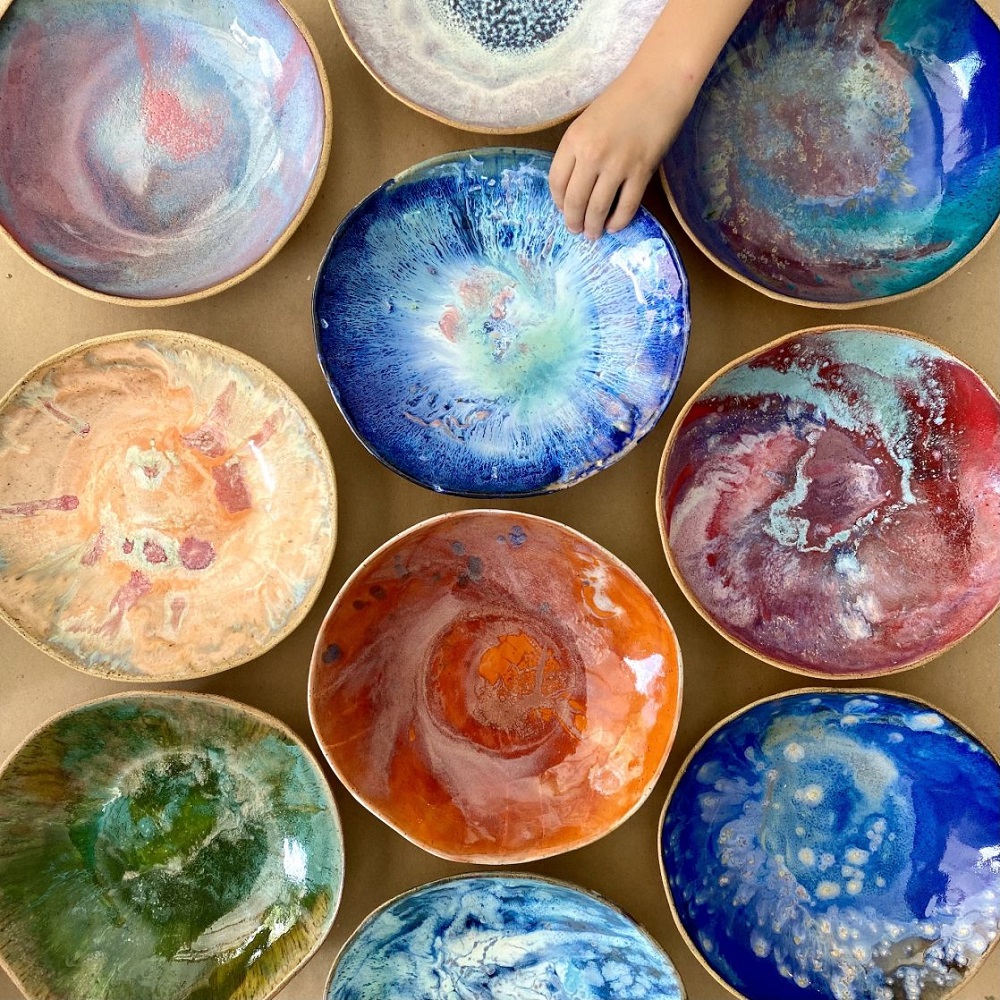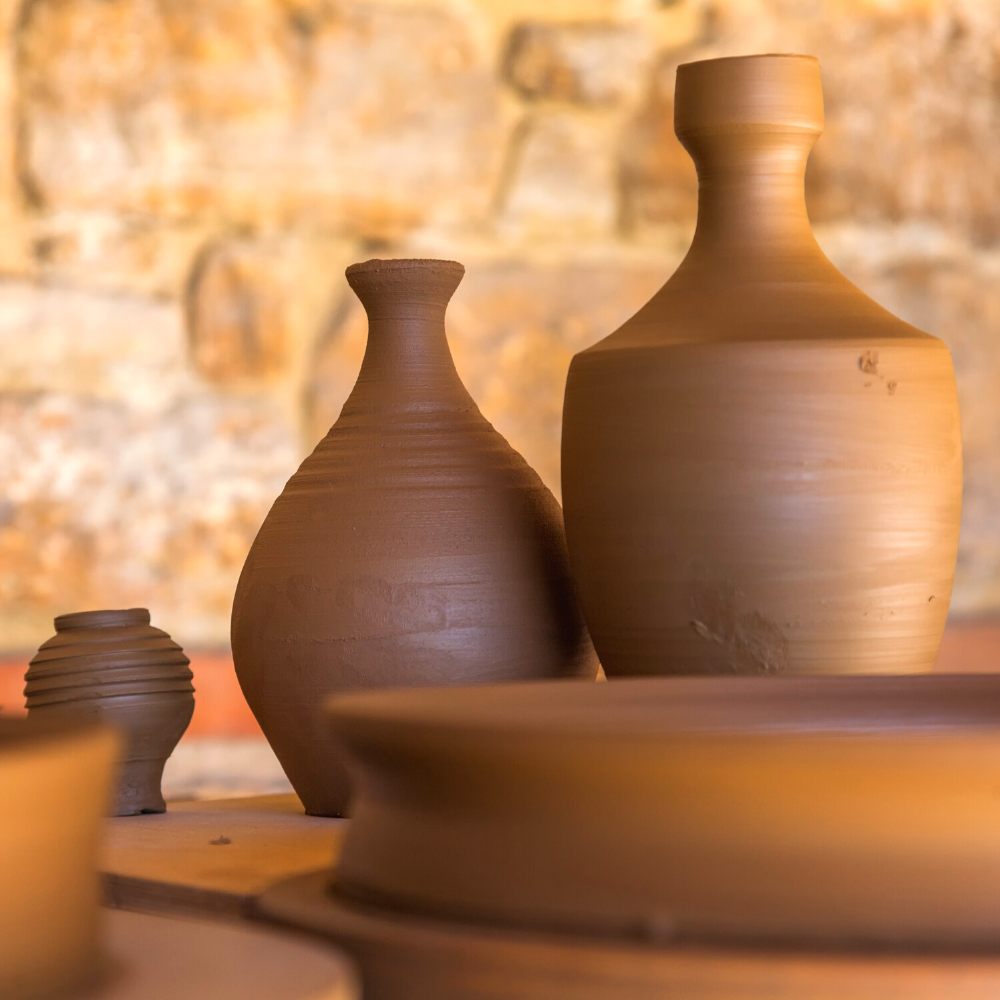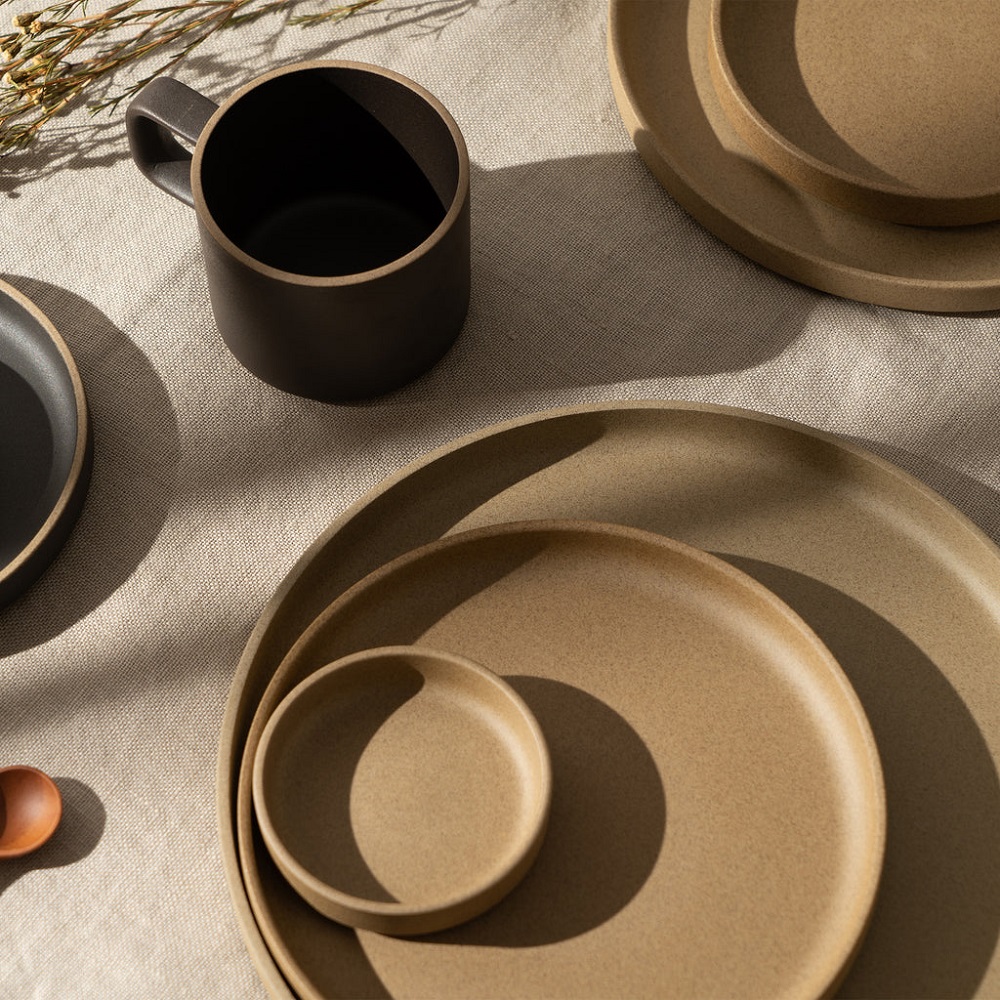Ceramics and pottery are terms often used interchangeably, but they represent different aspects of the art of shaping and firing clay. Understanding the distinction between these two concepts is essential for anyone interested in exploring the world of clay-based crafts. This comprehensive guide will help beginners grasp the fundamental differences between ceramics vs pottery while providing useful insights into their respective processes, materials, and applications.
Defining Ceramics and Pottery
What are Ceramics?
Ceramics refer to the broad category of materials made from clay that is shaped and then permanently hardened by heat. This category includes a wide range of items, such as tiles, sculptures, and tableware. Ceramics can be classified into several types based on their composition, firing techniques, and intended use. Some notable categories include earthenware, stoneware, and porcelain.
The term “ceramics” encompasses both functional and decorative applications. Ceramics can serve practical purposes in our everyday lives, such as dishes and vases, while also being used as art forms that showcase creativity and skill. The versatility of ceramics allows for endless possibilities, making it an attractive medium for artists and hobbyists alike.
What is Pottery?
Pottery is a specific type of ceramic ware made primarily from clay and shaped by hand or using a potter’s wheel. In essence, all pottery is ceramics, but not all ceramics are pottery. Pottery is characterized by its focus on functional items, such as bowls, plates, mugs, and storage containers. While pottery can also be decorative, its primary aim is often functionality.
Pottery has a rich cultural history, with roots stretching back thousands of years. Many civilizations have relied on pottery for practical purposes, as well as for ceremonial uses. The art of pottery involves various techniques, including pinch, coil, slab construction, and throwing on a wheel. Each technique contributes to the unique character and functionality of the finished piece.

The Materials Used in Ceramics and Pottery
Types of Clay
Both ceramics and pottery are made from clay, but the type of clay used can vary significantly. The three main types of clay are earthenware, stoneware, and porcelain. Each type has distinct characteristics and is suitable for different applications.
- Earthenware: This type of clay is typically red or brown and is fired at lower temperatures (around 1,830°F or 1,000°C). Earthenware is porous, meaning it can absorb moisture unless glazed. It is often used for decorative items, flower pots, and basic tableware.
- Stoneware: This clay is fired at higher temperatures (about 2,190°F or 1,200°C) and is known for its durability and non-porous quality. Stoneware is suitable for functional items, such as dinnerware and bakeware. It is often gray or brown in color.
- Porcelain: This type of clay is fired at very high temperatures (approximately 2,400°F or 1,300°C) and creates a strong, translucent finish. Porcelain is often used for fine dinnerware, artistic sculptures, and high-quality tiles. Its composition typically includes kaolin, feldspar, and quartz.
Glazes and Surface Treatments
Glazes play a significant role in both ceramics and pottery. They are a mixture of minerals that, when applied to the surface of a clay piece and fired, form a glassy, non-porous coating. This coating enhances the finished piece both aesthetically and functionally, providing color, texture, and protection.
Glazes can be glossy, matte, or satin, and they come in a wide array of colors and finishes. They also help prevent absorption of liquids and make the pottery easier to clean. Additionally, artists can experiment with glazes to create unique visual effects, such as drip patterns or crystalline finishes.
Some pottery may also be treated with underglazes or slips. Underglazes are colored clays applied beneath a clear glaze, while slips are liquid clay mixtures used for decorating or altering textures. These treatments allow potters to add intricate designs, textures, or colors without compromising the integrity of the final glaze.
The Processes Involved in Creating Ceramics and Pottery
Shaping Techniques
Shaping clay is one of the first steps in both ceramics and pottery. Different techniques are used based on the desired outcome and the type of item being created.
- Hand Building: This method includes techniques such as pinch pots, coils, and slabs. Hand building allows artists to create uniquely shaped and decorated pieces without the need for specialized equipment like a potter’s wheel. This technique fosters creativity and individuality.
- Throwing: This technique involves using a potter’s wheel to shape the clay. The process requires practice and skill to achieve uniformity and precision. Throwing is often employed for functional pottery like bowls, mugs, and plates.
- Molds: Some potters choose to use molds to create their designs. Molds allow for consistent shaping and decorative patterns, especially for items produced in larger quantities. This method can save time while still permitting creativity in decoration.
Drying and Firing
Once the clay is shaped, it must go through a drying process before firing. This step is crucial, as moisture can lead to cracking or exploding during firing. The drying time will depend on the thickness and size of the piece, as well as the humidity in the air.
Once dried, the piece is fired in a kiln. Firing transforms the clay into a durable ceramic material. The first firing is called “bisque” firing. This process removes any remaining moisture and strengthens the clay. After bisque firing, pieces can be glazed and then subjected to a second firing, known as glaze firing.
Firing temperatures vary depending on the type of clay and glazes used. High firing results in stronger, denser final pieces, while low firing may enhance color vibrancy. Understanding the firing process is crucial for achieving desired results in the final product.

Functional vs. Decorative Pottery
Functional Pottery
Items like bowls, plates, cups, and vases fall into this category. Potters often prioritize durability and utility in their designs. Functional ware must withstand regular use, handle food safely, and maintain a pleasing aesthetic.
Functionality often dictates design choices, such as the thickness of walls, handle shapes, and overall size. For example, a mug should have a comfortable handle for gripping, while a bowl might feature a wider lip for ease of use. In general, functional pottery must be crafted with care to endure the rigor of daily life while remaining visually appealing.
Decorative Pottery
On the other hand, decorative pottery focuses primarily on aesthetic value rather than functionality. This type of pottery includes sculptures, wall art, and ornamental pieces that may not have any practical use. Decorative pottery allows for greater artistic expression and creativity, as artists are not limited by functional requirements.
In creating decorative pottery, artists often experiment with intricate designs, colors, and textures. These pieces may incorporate unique glazing techniques or surface treatments that enhance their visual appeal. Decorative pottery invites viewers to appreciate the artist’s vision and skill while serving as a valuable decorative element in homes or galleries.
Historical Context of Ceramics and Pottery
Ancient Origins
Ceramics have a rich history that dates back to ancient civilizations. Archaeological evidence suggests that the earliest pottery was created around 29,000 BCE in the form of small figurines. As societies evolved, pottery began to serve more functional purposes, including cooking, storage, and trade.
The development of ceramic techniques varied across cultures. Ancient China produced high-quality porcelain around the 7th century CE, setting the standard for fine ceramics. In the Americas, various indigenous cultures developed intricate pottery traditions, often highlighting their unique styles and uses.
Cultural Significance
Throughout history, pottery has played a crucial role in cultural identity. Different regions have specific styles that reflect local customs, beliefs, and resources. For example, Native American pottery showcases intricate patterns that often have deep cultural meanings.
Ceramics are not only important artifacts but also continue to be an expression of cultural heritage today. Many artists draw inspiration from traditional techniques, blending them with modern styles to create unique, contemporary pieces. By studying pottery’s historical context, beginners can appreciate the cultural significance embedded in each piece.

Exploring Techniques and Styles
Traditional vs. Contemporary Techniques
As pottery evolves, so do the techniques employed by artists. Traditional pottery often involves age-old methods passed down through generations, focusing on hand-building and natural materials. These techniques celebrate historical practices and often result in uniquely crafted pieces.
Contemporary pottery, on the other hand, may incorporate modern materials and technologies. For instance, some potters use electric or gas kilns, making the firing process more efficient. Additionally, artists may explore mixed media by integrating non-traditional materials, such as metal or glass.
Embracing both traditional and contemporary approaches allows for a richer understanding of the craft. As a beginner, experimenting with various techniques can help develop your unique style and voice in pottery.
Styles and Aesthetics
The world of pottery is vast, with styles reflecting various cultural influences and artistic movements. From the rustic charm of southwestern pottery to the sleek lines of modern Scandinavian designs, styles can vary significantly.
Some popular styles include:
- Japanese Pottery: Known for its attention to detail and craftsmanship, Japanese pottery often features subtle glazes and harmonious shapes.
- Mediterranean Pottery: Vibrant colors and intricate designs characterize Mediterranean styles, often incorporating decorative motifs inspired by nature.
- Stoneware and Rustic Styles: These focus on natural earthy tones and rugged textures, making them suitable for functional pieces that evoke a sense of warmth and comfort.
Understanding these styles can inspire beginners to explore different approaches and discover their artistic preferences.
Embracing the Journey in Ceramics and Pottery
In conclusion, recognizing the differences between ceramics vs pottery is essential for anyone interested in exploring this art form. Both ceramics vs pottery offer fertile ground for creativity and self-expression, enabling artists to create functional and decorative pieces with enduring value.
By grasping the fundamentals of materials, techniques, and history, beginners can embark on their journey into the world of ceramics vs pottery with confidence. Embrace the opportunity to experiment with various methods and styles, allowing your artistic voice to flourish.
Ultimately, the art of ceramics vs pottery celebrates the beauty of transformation—from raw clay to finely crafted objects. As you experiment and learn, each piece you create will reflect your journey. Enjoy the process, seek inspiration, and let the art of ceramics enrich your life!